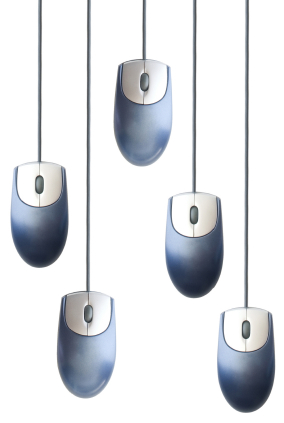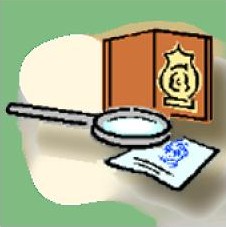 When it comes to finding places to buy essays, there isn’t much confusion. Essay-writing services do a booming business, and they’re not shy about selling themselves. ?Let professionals take care of your papers,? boasts one.
When it comes to finding places to buy essays, there isn’t much confusion. Essay-writing services do a booming business, and they’re not shy about selling themselves. ?Let professionals take care of your papers,? boasts one.
Term papers, lab reports, admission essays, theses?name your deadline, they’ll name their price. Other sites offer advice?and standard text?so students can fudge medical-school applications.
Even if students don’t use a professional service, there are still shocking numbers of them who admit to stealing material and passing it off as their own.
According to a 2005 McGill University Libraries report by Lorie Kloda and Karen Nicholson, as many as one-third of Canadian students ?admit to plagiarizing at least once before graduating.?
The problem is also very much alive in Great Britain, Australia, the United States, Norway?and the list goes on. In short, pick a country and you’ll likely find a certain percentage of students who are more than willing to cheat their way to a degree. (Of course, It’s reassuring to think that our own doctors, lawyers, and other degree-laden professionals actually did the work and know their stuff. We hope.)
High-school students aren’t far behind. According to one fact sheet, plagiarism in U.S. schools is high: ?In a Center for Academic Integrity study, 38 percent of students, including many at schools with honor codes, admitted to cut-and-paste Internet plagiarism in the United States last year.?
The problem isn’t new, but one aspect of it is: the technology that makes it easier than ever to find a service, order a paper, and have it dropped into your inbox, all in as few as three hours.
So how are colleges, universities, and even high schools combating the problem? With some technological help of their own: plagiarism-detecting software.
Plagiarism-detecting services are catching on, becoming increasingly popular even in some grade schools. And the uses aren’t limited to catching students who cheat on assignments: according to CopyCatch’s website, since September 2007 ?the Universities and Colleges Admissions Service is using CopyCatch Investigator to monitor personal statements submitted by applicants to United Kingdom universities.? (A word of warning: if You’re applying to medical school, don’t use the one about burnt pyjamas.)
Here’s how it works. A student writes a paper, but instead of submitting it directly to their instructor’s inbox, It’s filtered through the database of the plagiarism-software service. (Whether the anti-plagiarism software is web-based or downloaded to a subscriber’s computer, the theory behind them is the same, and several work with standard course-management software such as Blackboard, Moodle, and WebCT.)
Algorithms then compare the papers (in formats such as Word, Excel, PowerPoint, PDF, RTF, PostScript, and more) to vast amounts of text.
As the instructor manual at TurnItIn.com explains, ?Papers submitted to Turnitin are compared against billions of internet documents, an archived copy of the internet, our local databases of submitted student papers, and a database of periodicals, journals, and publications. Any matching text we find is detailed in an Originality Report.?
MyDropbox’s plagiarism software, SafeAssignment, works much the same way, according to their website. ?Our system uses a highly advanced algorithm to compare submitted manuscripts against the Internet Archive of over 8 billion documents, scholastic and news databases with over 9 million articles and an intra-institutional archive of previously submitted papers.?
After assignments are submitted and electronically reviewed, the instructor logs in and, as shown in one sample report, sees a list of all students and the overall percentage of each paper’s content that matches other sources. If the percentage is high, instructors can take a closer look, doing a side-by-side comparison of the documents (with suspect text highlighted) and viewing matching sources in their entirety.
So what’s not to like? The software makes professors? jobs easier, students are kept honest, and the scourge of plagiarism no longer debases the perceived value of a degree. But the situation isn’t nearly that simple, and a lot of confusion still reigns.
For starters, the reports don’t necessarily detect plagiarism; what they find are all occurrences of matching text. Same thing, right? Not exactly. Suppose you’ve written an essay about Shakespeare’s Twelfth Night. Throughout your 15-page paper, you’ve used plenty of quotations from the play, and you’ve also referenced every one of them in the correct citation style.
But when your instructor glances at the list of percentages detected by the plagiarism software, your paper is tagged with a high rate of matching text. The software is doing its job, but the judgement about whether It’s cheating or simply quoted (and properly referenced) material still rests with a human being. In other words, the software is an effective comparison tool, but It’s not a magic solution. Like all technology, It’s only as good as the person using it.
The software can search more widely?and more quickly?but instructors still need to take the time to read the reports carefully and review bibliographies and matching text.
If charged with plagiarism, students should have the right to review the report to make sure that properly cited material isn’t creating a false positive. (In some versions, instructors can customize settings to allow students to read their papers? reports either before or after handing them in, but That’s completely at the teacher’s discretion.)
These are important points to keep in mind before embracing this new tool, but perhaps the biggest concern about electronic plagiarism detection deals with copyright.
Programs such as TurnItIn.com (and others) don’t just search the web for material. They also search their database of text submitted by students at different schools?a database that grows with each submitted assignment. It isn’t always the case, but institutions can choose to allow the provider to add every scanned paper to their archive. This means the companies can offer all subscribers a more comprehensive search, making the product more valuable and potentially increasing profits.
But how can assignments be distributed to software users around the globe, and allowed to be used for profit, without compensation to the writer (in this case, the student)?
Some software companies avoid this issue altogether. When it comes to searching databases of student-submitted material, each university’s search is limited to papers within their school.
Just like a hard copy might, the electronic assignments are never viewed or released to anyone but members of that school’s faculty. And It’s perfectly reasonable to expect that schools can compare their students? essays to check for plagiarism, whether a prof sits at her desk with hard copies and a red pen, or compares papers on her computer.
The question remains, though: how can other companies take student papers and distribute them for profit? They can’t?at least, not without the professor’s permission. If a search by a teacher at University A turns up matching text in a paper submitted by a student at University B, a request must be sent to University B’s teacher to release the paper for viewing.
To many students, this still rankles. They created a piece of work and someone else is making money from it, period.
A group of high school students recently challenged a plagiarism-detection company over this issue in Virginia federal court, claiming, among other things, that the use of student assignments constitutes copyright infringement. The students lost, in part because the judge found the use of their papers by the companies fell within fair use guidelines.
(Copyright law is complex and varies depending on where you live or your school is located, and there just isn’t enough Advil to figure it out. If You’re curious, this Ars Technica article gives a clear summary of the case, and the decision can be found here.)
Although it may be used as a precedent, this is only one case among what are bound to be many. As the use of this type of software spreads, and more and more schools give their students no choice but to use it, the debate is sure to continue.
On one hand, many teachers and students agree that the software is a powerful tool that provides accurate, timely results comparing assignments to more sources than a human-based search ever could. It protects honest students? work from being copied, and keeps dishonest students . . . well, honest.
Opposing arguments are equally compelling. Students put in long hours researching, outlining, and writing assignments. Besides the work, most students struggle under incredible debt loads just to earn their degree. Fundamentally, it seems wrong that companies are making substantial profits off students? efforts, no matter how altruistic the stated goal might be.
No matter which side of the debate You’re on, one thing seems sure: as long as It’s possible to cut and paste from millions of sources, plagiarism-detecting software will be here to stay.


